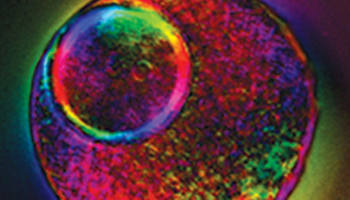What Makes a Good Egg and Healthy Embryo?
Discovery About Zinc’s Role May Help in Future Fertility Treatments
 |
Scientists as well as fertility doctors have long tried to figure out what makes a good egg that will produce a healthy embryo. It’s a particularly critical question for fertility doctors deciding which eggs isolated from a woman will produce the best embryos and, ultimately, babies.
New research reveals healthy eggs need a tremendous amount of zinc to reach maturity and be ready for fertilization — a finding that may ultimately help physicians assess the best eggs for fertility treatment, according to a study from Northwestern University.
“Understanding zinc’s role may eventually help us measure the quality of an egg and lead to advances in fertility treatment,” said Alison Kim, a postdoctoral fellow in obstetrics and gynecology at Northwestern University Feinberg School of Medicine. “Currently we can’t predict which eggs isolated from a woman produce the best embryos and will result in a baby. Not all eggs are capable of becoming healthy embryos.”
There’s no link yet to zinc content in the egg and the nutritional status of women, but Kim plans to research that area.
Kim is the lead author of a paper that will be published in the September issue of the journal Nature Chemical Biology. The article will be featured on the cover. Co-senior authors are Tom O’Halloran, PhD, director of the Chemistry of Life Processes Institute at Northwestern and associate director of basic sciences at the Robert H. Lurie Comprehensive Cancer Center of Northwestern University, and Teresa Woodruff, PhD, the Thomas J. Watkins Professor of Obstetrics and Gynecology and executive director of the Institute for Women’s Health Research at Feinberg. Woodruff also is a member of the Lurie Cancer Center.
Northwestern scientists, working with mice, discovered the egg becomes ravenous for zinc and acquires a 50 percent increase in the metal in order to reach full maturity before becoming fertilized. The flood of zinc appears to flip a switch so the egg can progress through the final stages of meiosis. Meiosis is when the egg sheds all but one copy of its maternal chromosomes before it can be fertilized by a sperm and become an embryo.
“Zinc helps the egg exit from a holding pattern to its final critical stage of development,” said O’Halloran, the Charles E. and Emma H. Morrison Professor of Chemistry in the Weinberg College of Arts and Sciences at Northwestern. “It’s on the knife’s edge of becoming a new life form or becoming a cell that dies. It only has 24 hours. Zinc seems to be a key switch that helps control whether the egg moves forward in its development stage. “
Kim found there were approximately 60 billion zinc atoms in a mouse egg just before the egg was ready to be fertilized. She measured the zinc content of the eggs using a technique called synchrotron-based X-ray fluorescence microscopy through collaboration with the Advanced Photon Source at Argonne National Laboratory. This method allowed detection of multiple metals in single eggs using the characteristic X-ray signature of each element.
Zinc levels were significantly higher in eggs than other important metals such as iron and copper. Zinc was the only metal to change significantly in concentration during the maturation process.
Northwestern scientists also used small molecules to block the accumulation of zinc by the maturing egg. They found an insufficient accumulation of zinc caused all the eggs to pause prematurely at the beginning stage of meiosis. The progression of meiosis was restored by returning zinc to the eggs.
Research on the role of zinc was funded by a W.M. Keck Foundation Medical Research Award, the Center for Reproductive Science through the NIH/National Institute of Child Health and Human Development and the Chemistry of Life Processes Institute at Northwestern University through NIH/National Institute of General Medicine. Use of the Advanced Photon Source at Argonne National Laboratory was supported by the Office of Basic Energy Sciences in the Office of Science of the U.S. Department of Energy.






